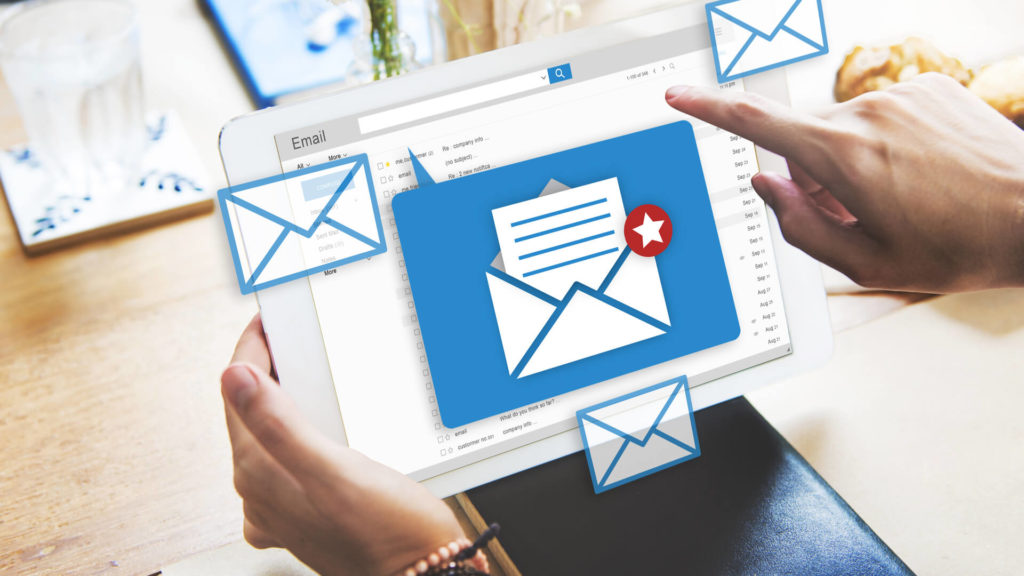There are two kinds of emails used to generate leads in business-to-business marketing: warm emails and cold emails.
A warm email is one that you send to a warm prospect. A warm prospect knows your company and has shown some level of interest in what you offer.
A cold email is one that you send to a cold prospect, someone who has shown no level of interest in what you offer. A cold email is the electronic equivalent of a cold call over the phone. Your prospect is not expecting it, and did not request it.
Warm emails and cold emails share one characteristic—you send them to people who are likely buyers of your products or services. The hardest of the two to write is the cold email. That’s because the recipient doesn’t know you and you don’t know them. Which means you have no relationship or common experience or shared understanding to work from. Plus, your email is an interruption.
Here’s how you write a cold email using a proven formula.

Step 1: Write a subject line that intriques
Don’t begin your email with a subject line that gives away everything your email is about. And don’t start your subject line by talking about yourself or your company or what you are offering.
The only goal of your subject line is to persuade your prospect to open your email. Your email subject line serves the same function as teaser copy on the front of a direct mail envelope—it entices the reader to open your email and start reading.
This means you must do two things with your subject line: demonstrate relevance and arouse curiosity. You demonstrate relevance by naming or alluding to a pain or challenge that your prospect has. And you arouse curiosity by hinting at a solution.
Here’s an example. Imagine you work for a company that develops an open source API that helps businesses develop bots and other types of conversational AI for customer engagement. Your prospects have a number of challenges in this area:
- app development costs are high
- app development is complex
- apps usually launch later than planned
You can use any of these pain points in your email subject line, like this:
Customer engagement app? Yes. Complexity? No.
Reducing your app development costs.
Launching your customer engagement app sooner.
You’ll notice that these subjects name a pain, promise a benefit, but do not mention how. They are examples of subject lines that intrigue.
Step 2: Demonstrate relevance immediately
In the body of your email, you must prove to your prospect that your message is worth reading. You do this by proving that you understand the prospect and have something of value to offer them.
The easiest way to do this is to name a major challenge that you know your prospect is likely facing. Let’s stick with our example. You’re a company that develops an open source API for developers. You know that one of their challenges is reducing development costs. So, you begin your email like this:
“Hi Bob, If you’re developing bots and other types of conversational AI for customer engagement, I thought you’d want to know of a way to reduce your development costs.”
This opening sentence demonstrates relevance immediately and offers a benefit without naming the solution, naming the company or introducing the sender.

Step 3: Introduce your solution
Now you offer a solution to your prospect’s challenge by introducing your product or service. Something like this:
“BotSherpa is an open API platform for customer engagement. We’ve already designed, coded and tested every feature your customer engagement app needs (such as enriched mobile, social and messaging, conversational AI processing, and CRM, ticketing and collaboration). These features are pre-built and available from our Open API at a much lower cost than developing them on your own.”
Step 4: Offer something of value
The most effective way to generate a lead with cold emails is to offer an exchange of value. You offer the prospect something, and ask for something in return.
The least effective way of generating a lead with cold emails is to ask the reader to phone you. Most prospects don’t want to talk with a salesperson, just as most shoppers don’t want to talk with a retail sales clerk.
This means your cold emails should feature two offers: a soft offer and a hard offer. A soft offer is something of value that your reader gets without having to talk with anyone, such as a white paper or special report that they download from your website. A hard offer is something of value that your reader gets in exchange for talking with a sales person, such as a product demo or free assessment.
Here’s an example of what I mean:
“If reducing your development costs is a priority for you next quarter (or any quarter, for that matter), I invite you to download our white paper, Seven Ways to Lower Your App Development Costs. If you are ready to learn more about our solution, call me today to schedule a demo and get started with your 30-day free trial.”
Notice that this paragraph features both the offer and the call to action. The soft offer is the white paper. The call to action is “download our white paper.” The hard offer is the demo. The call to action is “call me today.”
In each case, the prospect gets something of value, and you get something of value. They get the white paper or the demo. And you get their contact details or their engagement over a phone call.
Conclusion
The secret to the success of this cold email prospecting formula is intrigue, relevance, benefit and brevity. If you grab your prospect’s attention, demonstrate that you understand their pain, have a solution and offer something of value, and if you do all of this as quickly and as succinctly as possible, you’ll generate leads.

Recent Comments